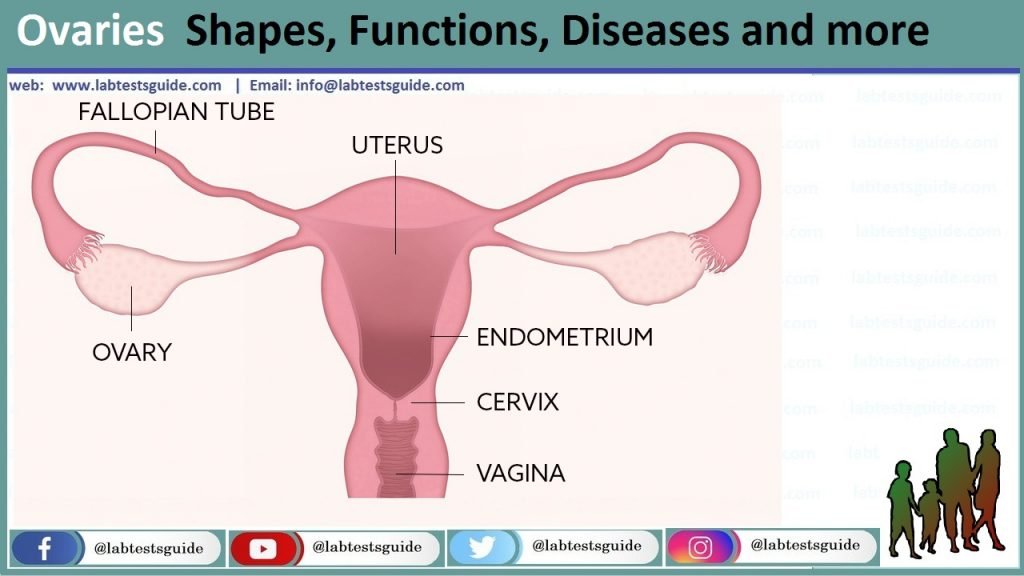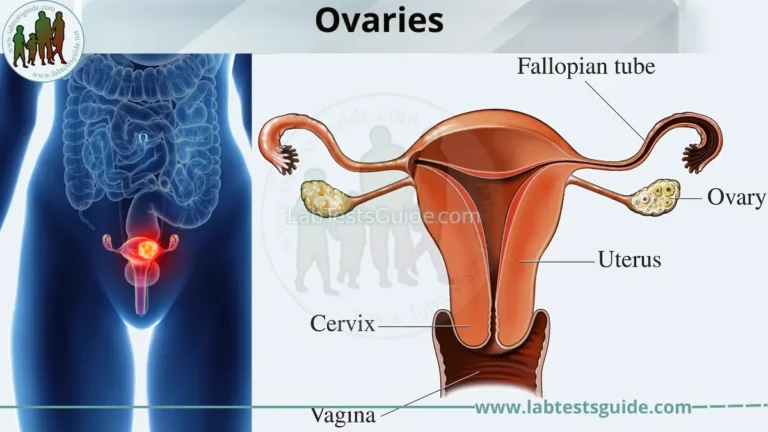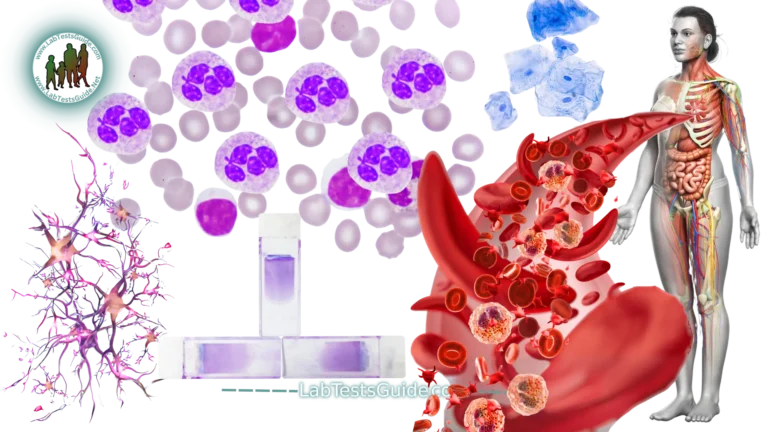The ovary is a ductless reproductive gland in which female reproductive cells are produced. Females have a pair of ovaries, supported by a membrane next to the uterus on each side of the lower abdomen. The ovary is necessary in reproduction, as it is responsible for producing the female reproductive cells or eggs.

Ovarian Essentials:
- The ovaries maintain the health of the female reproductive system.
- They secrete two main hormones: estrogen and progesterone.
- Diseases associated with the ovaries include ovarian cysts, ovarian cancer, menstrual cycle disorders, and polycystic ovary syndrome.
Shapes and Structures:
The ovaries are oval shaped and about the size of a large grape. They are located on opposite ends of the pelvic wall, on either side of the uterus. The ovaries are each attached to the fimbria (tissue that connects the ovaries to the fallopian tube).
Fuctions:
The ovaries have three functions. First, they shelter and protect the eggs a female is born with until they are ready for use. It is thought that women are born with their lifetime supply of eggs, but a study by the University of Edinburgh’s School of Biological Sciences found that chemotherapy might spark the development of new eggs.
- To produce oocytes (female gametes) in preparation for fertilisation.
- To produce the sex steroid hormones oestrogen and progesterone, in response to pituitary gonadotrophins (LH and FSH).
Diseases and Disorders of the Ovaries:
- Osteoporosis: Osteoporosis is commonly associated with menopause, as are mood swings and hot flashes.
- Ovarian Cancer: Ovarian cancer is an extremely serious but rare disease. Usually its symptoms don’t become apparent until the cancer has progressed to later stages.
- Ovarian cysts: Ovarian cysts are fluid-filled sacs that affect women of all ages, but especially women of childbearing age. Cysts are very common and can range in size from a pea to a grapefruit. Most cysts are harmless, although larger cysts (those larger than 5 cm in diameter) may need to be surgically removed because large cysts can twist the ovary and cut off its blood supply.
- Polycystic Ovarian Syndrome: Polycystic means “many cysts.” Interestingly, the National Institutes of Health (NIH) criteria for diagnosing PCOS do not require the presence of polycystic ovaries by pelvic ultrasound. NIH criteria are based on signs of hyperandrogenism (or elevated androgens) and oligo / amenorrhea. Other key features include infertility, irregular menstruation, acne, and increased hair growth on the face and body.
Related Content
| Keywords: Disease, Ovarian, Diseases, Ovarian, Ovarian Diseases, OVARIAN DISORDER, ovary disorder, OVARIAN DIS, Disease of ovary, ovarian disorders, ovarian disorders (diagnosis), Disorder ovarian, Ovarian disorder NOS, Ovarian Diseases [Disease/Finding], ovary disorders, disease ovarian, ovarian diseases, ovary disease, ovary diseases, diseases ovary, disease of ovary, disease ovaries, disorder ovaries, ovarian disease, disorders ovaries, disorders ovary, disease ovary, diseases ovaries, Ovarian Disorders, Ovaries–Diseases, Ovarian disorder, disease (or disorder); ovary, Disease of ovary, NOS, Ovarian disorder, NOS, Disorder of ovary, Disease of ovary (disorder), Disorder of ovary (disorder), Ovary Disorders, Ovarian Disease, Ovarian Disorder, ovarian disorder |
Possible References Used




